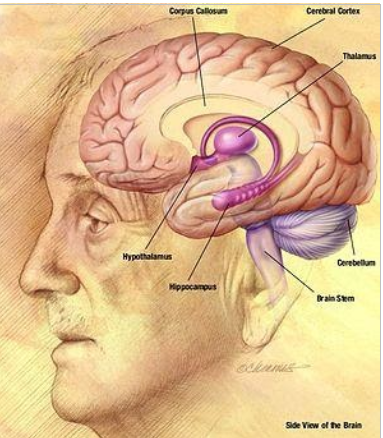Working Memory Can Be Stored Inside Single Neurons, Suggests New Study

Image Courtesy: Wikipedia.
For neuroscientists, memory storage and consolidation remains an elusive subject, as such a great part of neuroscience research has been devoted to decipher where exactly memory is stored and the underlying processes. There are several questions raised by these research. Do the connections among the neurons (the synapses) modify memories or is it neuron itself that has some intrinsic properties to store memories or there exists some crucial proteins that are responsible for memories? Probably, some of them are responsible for memories, or may be all of them are involved, the matter of the fact is that a decisive answer is still awaited.
As early as 1949, Donald Hebb had postulated a hypothesis which said that there exists some mechanisms of the connections or synapses among neurons which control the mechanism of memory; when the synapses are weak, a memory is lost and when these are strong enough we have a lasting memory, even for a lifetime. This is what is known as synaptic mechanism of memory. A great number of research have established synaptic memories and also have brought out many aspects of it.
However, lately there are growing evidences that show that memory formation goes beyond the level of synapses. Individual neurons have intrinsic properties that can store and also modify memories. Adding to this emerging field of neuroscience research, a PNAS publication on August 11 has shown that single neurons can hold memories. The research was done on working memory in language processing. The study suggests that intrinsic properties of single neurons can hold such memories.
In language processing, we need to do two things. First, remember the words and second, combine them into a sentence for the interpretation. The brain retains the information about the words and also puts them in context for understanding the meaning. But, the interesting fact is, neuronal firing or excitation, the basis of any brain function is a short-lived event. In response to a stimulus (an environmental cue), neurons fire (sends signals) for a brief time. Then, how does the brain manage to retain a memory?
The present study offers an explanation. According to it, individual neurons change the rate at which they fire based upon the previous experience of stimulus and this provides the platform for memory formation for sentence processing.
They found that working memory for language processing can be formed by down-regulation of neuronal firing in response to previous history of input or stimulus. Hartmut Fitz, the lead author of the paper, said, “This suggests that working memory could reside within single neurons, which contrasts with other theories where memory is either due to short-term synaptic changes or arises from network connectivity and excitatory feedback.”
Their study shows that neuronal memory is context dependent and also sensitive to serial order, a suitable condition for language memory. “It is crucial to try and build language models that are directly grounded in basic neurobiological principles. This work shows that we can meaningfully study language at the neurobiological level of explanation, using a causal modelling approach that may eventually allow us to develop a computational neurobiology of language,” Fitz further said.
The researchers adopted a computational neuroscience approach and applied network biology in bringing out their conclusions. They took a network of neurons under a physiologically relevant condition that depicts the so-called circuit of neurons. They used a variety of biologically plausible input or stimulus and simulated the network behaviour and individual neurons’ responses in it.
The study was a joint venture of researchers from the Max Planck Institute for Psycholinguistics and Julich Research Centre, Germany.
Get the latest reports & analysis with people's perspective on Protests, movements & deep analytical videos, discussions of the current affairs in your Telegram app. Subscribe to NewsClick's Telegram channel & get Real-Time updates on stories, as they get published on our website.














